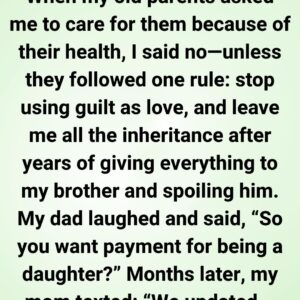Donald Trump’s return to the United Kingdom came with all the grandeur a state visit is designed to showcase. Motorcades swept through Windsor, the historic halls of the castle opened with quiet ceremony, and the choreography of greetings unfolded with practiced precision. Every detail was arranged to project harmony between two nations—handshakes measured, steps timed, the backdrop carefully chosen. Yet in the midst of all that orchestration, one unscripted moment unsettled the rhythm, leaving King Charles looking visibly uneasy.
Trump and the First Lady, Melania, had arrived late Tuesday evening, spending the night at Windsor Castle before stepping into a full schedule on Wednesday. The day began with private meetings between the president and the king, followed by greetings from Prince William and Princess Kate. On the castle lawn, the military assembled in full regalia, and a flyover by the Red Arrows streaked the sky with color. The evening promised a glittering state banquet, one meant to highlight unity, pageantry, and the weight of tradition.
But the moment that captured global attention did not take place at the banquet table. It happened during the review of the troops—a portion of the day governed by rules so strict that even slight deviations become magnified.
For monarchs, inspections are not casual strolls; they are rituals, laden with symbolism about authority, hospitality, and mutual respect. The king is meant to set the cadence, and the guest is expected to follow his lead.
When the time came, King Charles appeared to gesture for Trump to wait, signaling that the inspection should proceed on the king’s timing. Instead, Trump strode forward. Cameras captured Charles caught a half-step behind, his polite half-smile unable to mask his discomfort.
The scene echoed a widely discussed incident from 2019, when Trump briefly moved ahead of Queen Elizabeth during a similar inspection, sparking debates about breaches of royal protocol.
This time, the internet again lit up with speculation, frame-by-frame analysis, and body-language commentary.
Inbaal Honigman, a body-language expert speaking for OLBG, suggested that Charles was caught in a split-second bind.
His subtle gestures—a smoothing of his tie, hands held taut, slight hesitation—were, she argued, indicators of tension. In that instant, the king had to choose between two unappealing options: correct a guest publicly and risk awkwardness, or allow the breach and quietly adjust.
Trump, on the other hand, seemed oblivious to the disruption. His body language projected confidence, as though convinced he was moving exactly as the occasion demanded. Charles, meanwhile, attempted several subtle corrections. At one point, he positioned himself to step between Trump and the Guard, trying to reclaim the frame of the ceremony. Yet Trump, without malice but with characteristic bluntness, shifted again, unintentionally blocking the king’s maneuver.
The solution came in the form of touch. With quiet decisiveness, Charles placed a guiding hand on the president’s back, gently steering him back into alignment. That gesture, almost imperceptible to some, transformed the moment. What might have been an embarrassing breach was instead reframed as a diplomatic reset, the kind of small adjustment royal hosts are trained to deliver without making headlines. By the time they turned back toward their seats, Charles had slipped into the lead once more, restoring the balance of the ritual.
Incidents like this highlight the delicate interplay between protocol and personality.
Troop inspections are small performances, but every movement carries weight. They communicate hierarchy, deference, and respect. Royal hosts are trained from childhood to guide these rituals flawlessly. Foreign leaders, however, arrive with instincts shaped by their own traditions. A step that seems natural in Washington may clash with the choreography of Windsor. These moments, stripped of context, become Rorschach tests for the public. Some interpret them as arrogance. Others see them as confidence. Still others notice only the reassuring hand at the end that smoothed the edges of an awkward pause.
What lingers in memory is the striking contrast: a day engineered down to the finest detail suddenly punctured by an unscripted beat. And yet, rather than unravel the ceremony, that very moment revealed something more human. Even amid the grandeur of a state visit, with its gilded halls and military displays, diplomacy comes down to small choices—when to step forward, when to hold back, and how to turn a near-miss into a seamless pivot.
For Charles, that guiding hand was not just a way to redirect the choreography. It was a quiet demonstration of his role as a host, a leader, and a diplomat. For Trump, the moment seemed to pass without second thought. The two men moved on, smiling for the cameras, the official program continuing as though nothing had happened. But in the subtle tension of those few seconds, the world glimpsed the delicate balancing act at the heart of royal diplomacy: preserving the script while accommodating the unscripted.
Even on a day crafted for the history books, there is always room for improvisation. And sometimes, it is the small, unplanned gestures—the hesitant smile, the smoothing of a tie, the steadying hand on a guest’s back—that tell the truest story of all.





